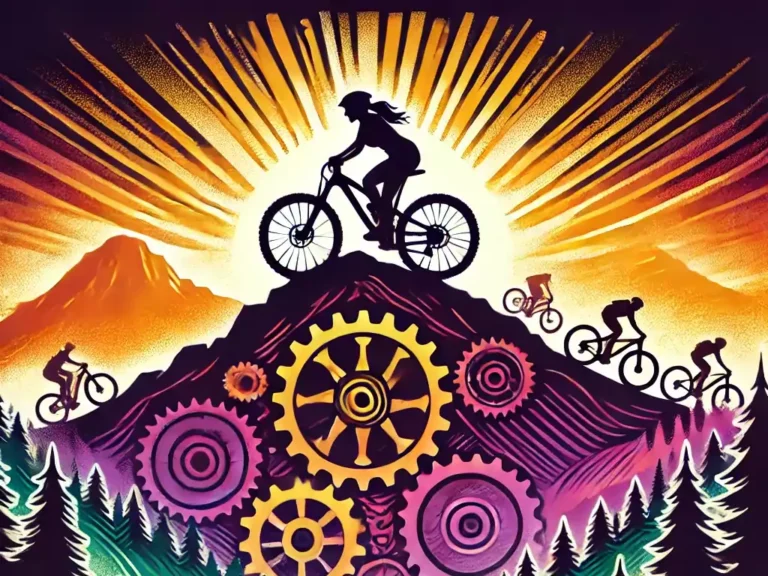Top 10 Essential Mountain Biking Gear Items for Beginners

Mountain biking is a thrilling adventure, but without the right gear, it can quickly turn into a rough ride. Whether you’re just starting out or gearing up for your first trail, this list will help you be prepared, safe, and ready to roll.
1. Helmet
Your helmet is the most important piece of protective gear you’ll own. It protects your brain—a pretty important organ! Make sure it fits snugly but not uncomfortably, and always fasten the strap. Look for one that’s certified for mountain biking to ensure maximum protection.
Examples of mountain bike helmets are:
- Fox Speedframe Pro
- Trek Quantum WaveCel
- Troy Lee Designs A3
- Smith Mainline MIPS
Pro Tip: Replace your helmet after any significant impact or every few years, even if it looks fine.
2. Gloves (Whole-Hand)
Mountain biking can be hard on your hands, so gloves are a must. Whole-hand gloves protect your palms, fingers, and knuckles from scrapes and blisters. They also help you maintain a firm grip on your handlebars, especially when things get sweaty.
Pro Tip: Choose gloves with padding for extra comfort on longer rides.
3. Sunglasses or Clear Glasses
Sunglasses shield your eyes from the sun, dirt, bugs as well as twigs and small branches. If you ride in low-light conditions, clear glasses work just as well. Keep your eyes protected to avoid any “blink-and-you-miss-it” moments—or worse, debris injuries.
Pro Tip: Look for shatterproof lenses for added safety.
4. Pump
A flat tire can end your ride in minutes if you’re unprepared. A compact, portable pump is essential for trail-side tire adjustments. Many pumps are small enough to mount directly on your bike. For fatter tires, a CO2 cartridge can save time and hassle.
Pro Tip: Practice using your pump at home so you’re confident in a pinch.
5. Repair Kit
Trail emergencies happen, but with the right tools, you can keep rolling. A basic repair kit should include:
- Multi-tool: Tighten bolts and adjust parts.
- Tire levers: For removing tires when fixing flats.
- Patch kit: Seal small punctures in inner tubes.
- Chain tool: Fix a snapped chain.
- Spare links: Handy for quick chain repairs.
Pro Tip: Keep your repair kit organized and check it before every ride. It’s easy to forget you used up your patches during your last ride.
6. Spare Tube
Sometimes, patches won’t cut it. A spare inner tube is your best bet for quickly fixing a blowout. Make sure it’s the right size for your tires, and learn how to swap it out beforehand.
Pro Tip: Carry it in a protective bag to avoid accidental punctures.
7. First Aid Kit
Scratches, scrapes, and bumps are all part of the adventure. A small first aid kit should include bandages, antiseptic wipes, and tweezers. Also consider bringing gauze, tape, a triangle bandage, and pain reliever for extra preparedness.
Pro Tip: Know how to treat basic injuries to keep yourself or a fellow rider safe.
8. Hydration
Staying hydrated is non-negotiable. A hydration backpack is a great option—it holds more water and has extra pockets for gear. If you prefer simplicity, use a bottle cage and carry an additional bottle in your backpack.
Pro Tip: Start hydrating before you hit the trail. Don’t wait until you’re thirsty!
9. Light
If you’re riding at night or in shaded trails, a good light is crucial. Look for a bright, rechargeable LED light that attaches to your handlebars or helmet.
Pro Tip: Bring a spare light or batteries, just in case.
10. Food
Fuel your body with snacks like energy bars, trail mix, or bananas. Mountain biking burns calories fast, so pack enough to keep your energy up for the entire ride.
Pro Tip: Avoid anything too heavy—it’ll weigh you down.
Bonus Tip: Basic Bike Repair Knowledge
Knowing how to fix a flat tire, reattach a dropped chain, or adjust your brakes can save you from walking your bike home. Watch videos or take a local bike maintenance class to build your skills.
So how do you carry the above mentioned items? Take advantage of specialized bags for bikes such as under-seat bags and frame bags that hang from your top tube (often triangle shaped to fit the space).
As you continue mountain biking, you may want to invest in further items such as:
- Decent pedals paired with shoes designed for mountain biking
- A good saddle designed to fit you comfortably
- Nice knee pads that are comfortable enough to wear on every ride
- Padded bike shorts
- A quality bike rack
But they are not necessary to get you going.
Ready to Ride?
With these 10 essentials (plus some know-how), you’re ready to conquer the trails. Gear up, ride smart, and most importantly—have fun!

by: Cory Willins
Cory is a dynamic and passionate content writer, specializing in sports-related topics. With over a decade of experience in the field, Cory has established… read more






